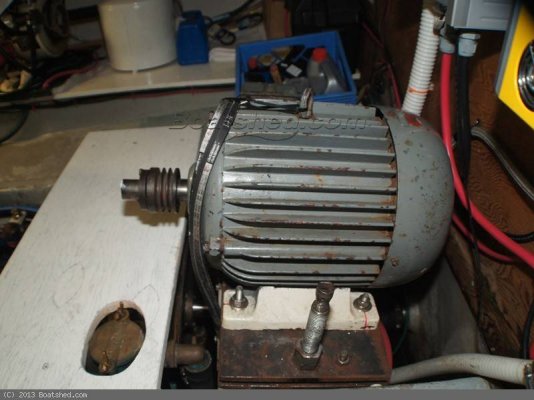George.
Newbie
Has anyone else toyed with the idea of using a 12.5KVA generator ( which I happen to have already installed and plumbed) with fuel and cooling .
An reversible electric motor and rheostat, along with a sailboat type of folding prop to propel a 45 ft twin that weighs 38000 lbs.
I am thinking a double wide chain and sprocket drive system that would allow easy ratio changes ,motor to mounted off center to allow for sprocket changes during experimental stages. Any ideas on the propellor thrust blocks?
I am thinking the folding prop under the swim grid , so that is not impeding during displacement cruising and would be fully out of water during planning.
I am hoping that existing rudders (and autopilot)would be sufficient for steering control
The objective here is for salmon trolling at 2-4 knots without having to use either of the big Cummins.
An reversible electric motor and rheostat, along with a sailboat type of folding prop to propel a 45 ft twin that weighs 38000 lbs.
I am thinking a double wide chain and sprocket drive system that would allow easy ratio changes ,motor to mounted off center to allow for sprocket changes during experimental stages. Any ideas on the propellor thrust blocks?
I am thinking the folding prop under the swim grid , so that is not impeding during displacement cruising and would be fully out of water during planning.
I am hoping that existing rudders (and autopilot)would be sufficient for steering control
The objective here is for salmon trolling at 2-4 knots without having to use either of the big Cummins.


